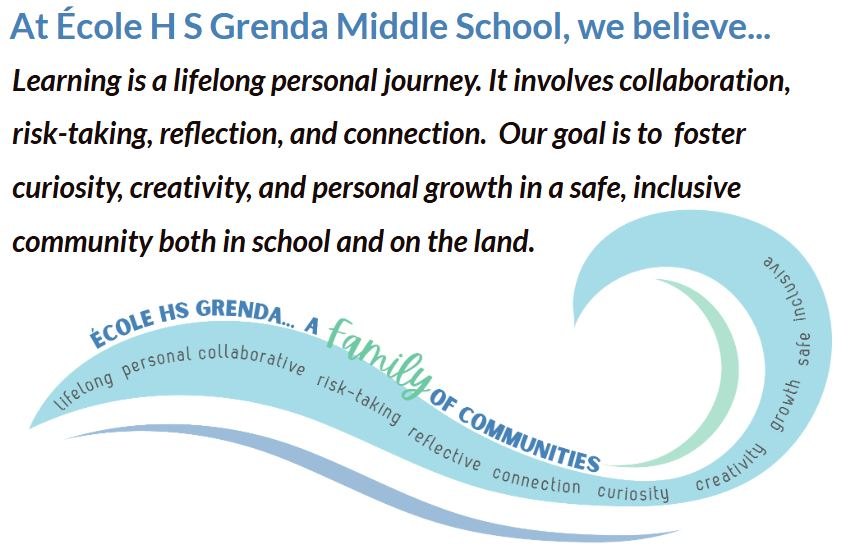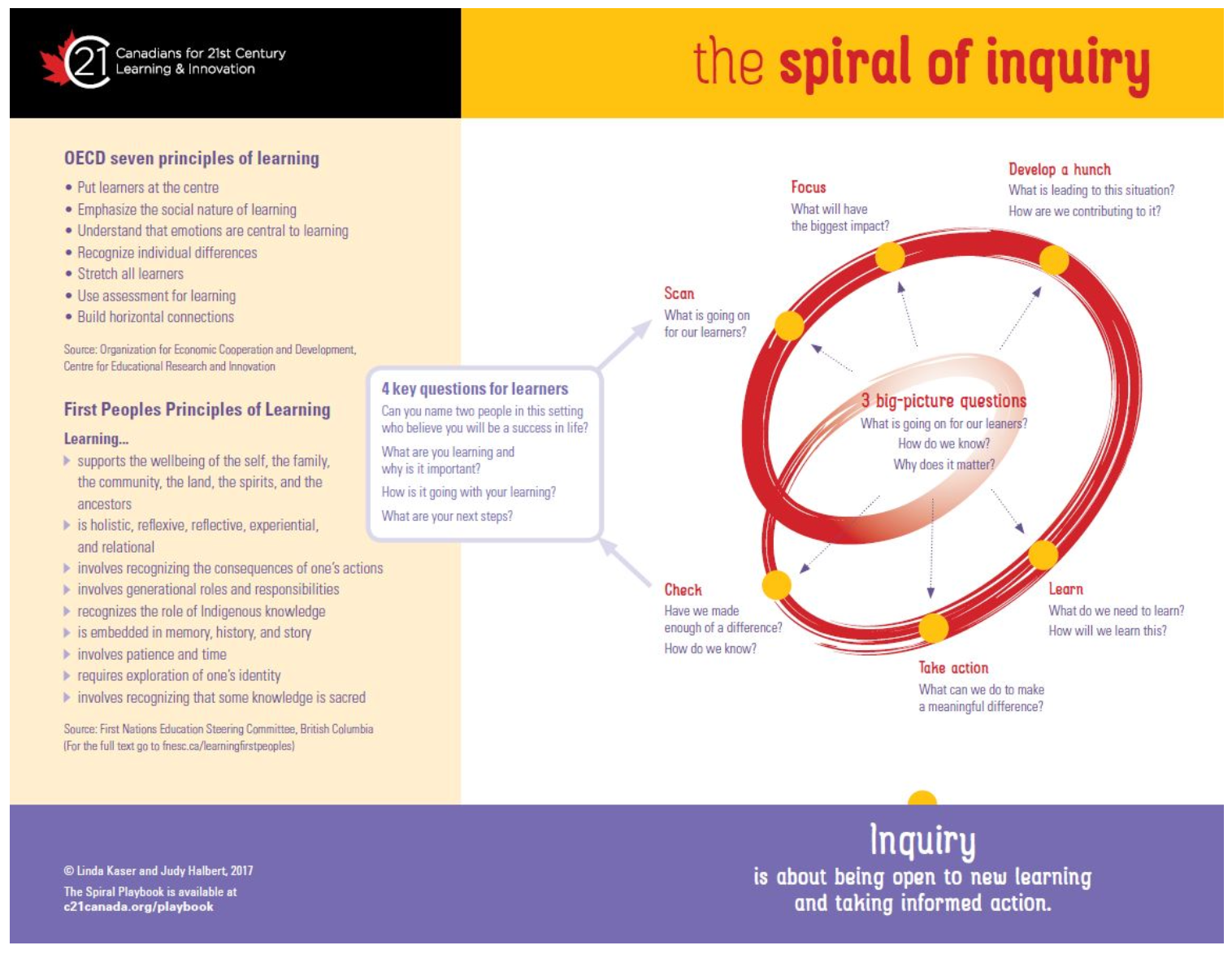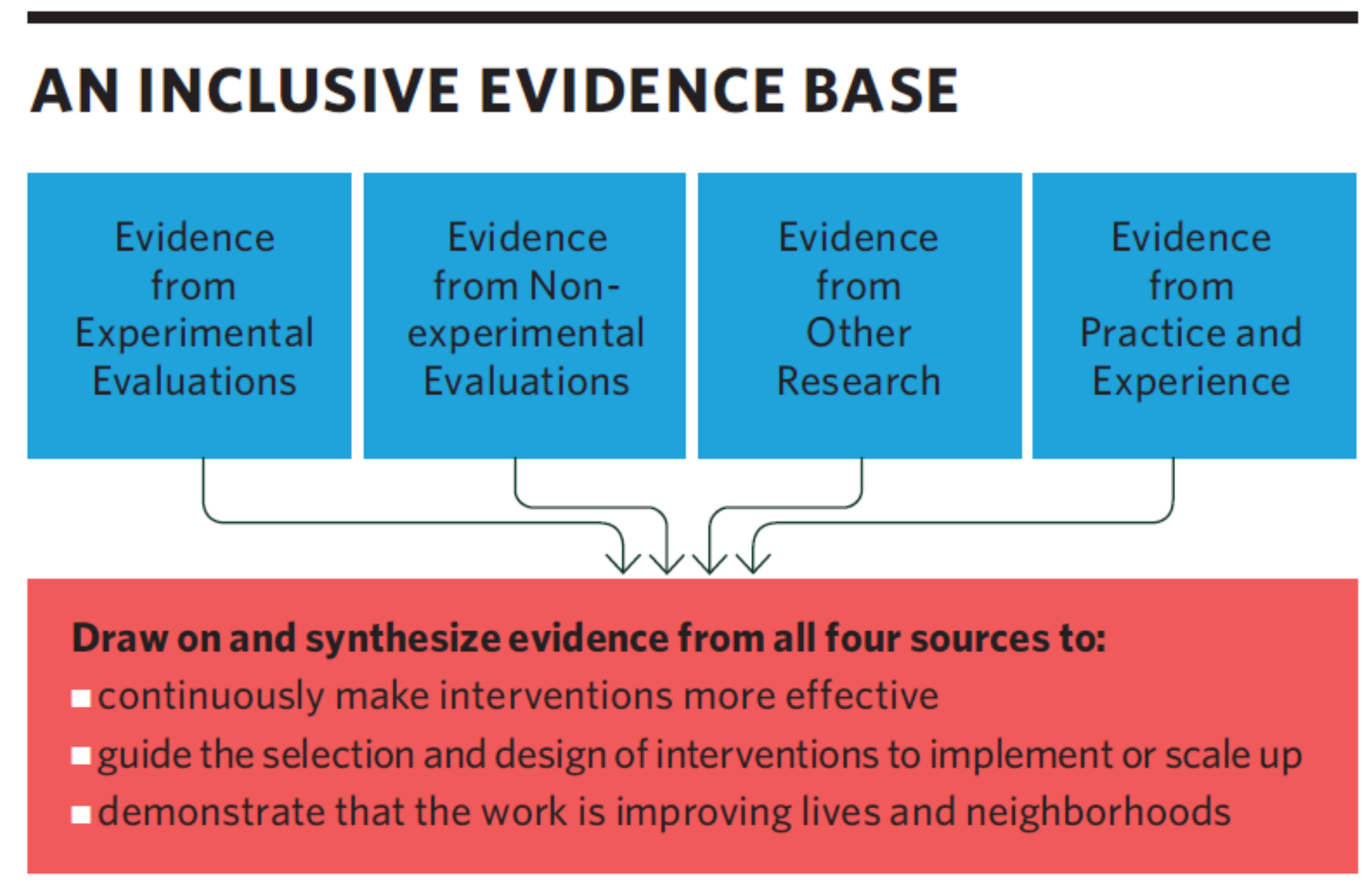Our Context
École H. S. Grenda Middle School (HMS) is a new school in the Lake Country community located on the unceded Traditional Territory of the Okanagan Syilx People. Nestled amongst orchards, parks, and lakes, the school has been built to embrace the natural beauty that surrounds it with its large windows and wide open spaces. On September 7th, 2021, we were thrilled to welcome our first group of students to the school. In the opening year we welcomed new grade 6 and 7 students from the surrounding feeder schools. On September 6th, 2022 we expanded to a grade 6, 7, and 8 school. This will be our final grade configuration. As a dual track French Immersion and English school, we pride ourselves as being a vibrant and unique school; one that builds strong communities, cultivates curious learners, and ignites individual passions.
Our Learning Journey
École H. S. Grenda Middle School currently is wrapping up the first year of our five-year learning plan. The 2024-25 school year is our transition year. During this stage, we build our team as well as the capacity of our educators in achieving our learning priorities through the lens of our collective belief in learning. "At École H S Grenda Middle School, we believe learning is a lifelong personal journey. It involves collaboration, risk-taking, reflection, and connection. Our goal is to foster curiosity, creativity, and personal growth in a safe, inclusive community both in school and on the land."
École H. S. Grenda Middle School Learning Priorities

Belonging: Strengthen each learner’s sense of well-being, identity and community.
Resilience: Build each learner’s confidence to take risks, welcome challenge, and confront obstacles in their learning.
Numeracy: Develop each learner’s numerical thinking to explore, analyze, and understand problems in fluent and flexible ways.
Literacy: Develop each learner’s critical thinking of diverse content, fostering deeper understanding and the ability to form and communicate their own perspectives.
Spirals of Inquiry
Like all Central Okanagan Public Schools, the Spirals of Inquiry (Halbert & Kaser) is the framework which has guided our inquiry process and has led to our three learning priorities.
Determining Our Impact
"How do we know that what we are doing is making enough of a difference for our learners?" This main guiding question from the Spirals of Inquiry helps us monitor our learning goals. What we choose to collect as evidence of our actions and school improvement is crucial. Evidence of change and evidence of school improvement are very different.
Research helps us identify the types of evidence that we should be collecting to monitor school improvement. The graphic titled "An Inclusive Evidence Base" comes from an article in the Stanford Social Innovation Review (Lisbeth B. Schorr, "Broader Evidence for Bigger Impact, " Stanford Social Innovation Review , Fall 2012) and it states that to have a better idea of an impact, we need to examine evidence from a variety of sources:
- Evidence from Experimental Evaluations (ie. formal studies)
- Evidence from Non-experimental Evaluations (ie. report card data, Middle Years Development Instrument, School Wide Write)
- Evidence from Other Research (ie. studies and scholarly papers around the same initiatives)
- Evidence from Practice and Experience (ie. what we experience, observe, and collect in schools every day)
Research tells us that schools who broaden their evidence base the better idea of the positive impacts their work is making. As a staff, as we move down the road of collecting evidence to inform our practice over time, we will use this framework to guide our thinking about the collection and analysis of our evidence.
To view our School Community Student Learning Plan please click here.




